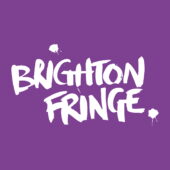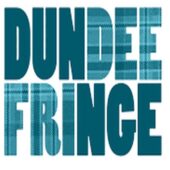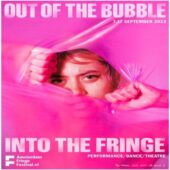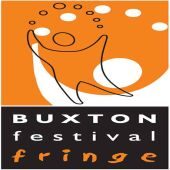FringeReview UK 2017
Saint George and the Dragon
National Theatre, London

Genre: Contemporary, Drama, Family, Live Music, Mainstream Theatre, Musical Theatre, New Writing, Theatre
Venue: National Theatre, Oliver
Festival: FringeReview UK
Low Down
Lyndsey Turner directs this as the folk tale it is, figuring toy and cartoonish houses in Rae Smith’s treasurable design – medieval village, Victorian smoking stacks and glass skyscrapers on the Olivier’s revolve giving on to a raised section featuring a home over these centuries, and once a wheelie bin lot. Bruno Poet’s lighting manages medieval sunlight, Victorian smog and neon stabbing the night so we cusp realism without inhabiting it. But it’s a musical too: Grant Olding’s catchy music with Lynne Page’s choreography swinging the ensemble earthily to Tom Kelly’s band.
Review
Rory Mullarkey’s got form when it comes to crusading innocents – and that’s already an oxymoron. His Saint George and the Dragon, premiering at the Olivier, comes not long after his The Wolf From the Door, a four-hander seen at the Royal Court in 2014. In that, we saw an innocent with no ties recruited to become ruler after the WI class massacre the ruling class – first victim is a hapless Tesco assistant manager. A peculiarly-balanced piece, it seems inspired by the source Mullarkey pays handsome tribute to in his latest work, written over several years.
That’s Evgenii Schwartz’s 1943-4 The Dragon, where a Tsarist dragon is duly replaced by a Stalinist one. It’d be fascinating to see a straight translation: it was performed for instance in Sri Lanka in 2011. Mullarkey’s Saint George and the Dragon remodels it to a British setting though changes the ending too – and this is what makes it his play rather than a free adaptation.
Lyndsey Turner directs this as the folk tale it is, figuring toy and cartoonish houses in Rae Smith’s treasurable design – medieval village, Victorian smoking stacks and glass skyscrapers on the Olivier’s revolve giving on to a raised section featuring a home over these centuries, and once a wheelie bin lot. Most spectacularly though the play delivers what it says on its tin armour. Flying severed dragon heads dive and crash in flames like fallen Messerschmidts. Bruno Poet’s lighting manages medieval sunlight, Victorian smog and neon stabbing the night so we cusp realism without inhabiting it.
But it’s a musical too. Mullarkey’s provided verses at the opening of each act: George delivers the Chaucerian first, the next two are sung to Grant Olding’s catchy music with Lynne Page’s choreography swinging the ensemble earthily to Tom Kelly’s band. The necessary mythic ripples fade into their acts, tell us not to expect less than primary colours and nothing slant.
John Heffernan shines out in his blond halo as an ardent, occasionally crushed hero with a dragon tale between his legs: he’s returned home after being defeated, with scars to show it. Meeting Gawn Granger’s grittily warm Charles and Amaka Okafor’s daughter Elsa turns him back into a fighting machine, defeating her imminent sacrifice at the stake. There’s the dragon’s lackey Henry, and Dragon himself, Julian Bleach’s fantastically tricked camp turn with gravelly reassurance of pure-voiced villain. Once George has challenged and lopped, a trumpet call summons him back to his brotherhood. Away a year, he returns from dragon-slaying on an industrial scale to find that’s what the village has become: five centuries of development compressed into a Victorian calendar, as no-one’s aged more than a year here either.
This is where Mullarkey separates some of the Schwartz material. The Dragon can only be defeated by different internalised means, revealed by prison-bound Henry (Richard Goulding’s appealingly reformed New Man) to avoid Elsa’s hanging for stopping a industrial lever crushing a boy’s leg. Again George is summoned directly afterwards, to a parallel land where dragons still need slaying.
Schwartz’s very dangerous point was that dragons become internalised. Mullarkey’s version renders George returning after yet another year, an anachronism. Twenty-first century Elsa hard-pressed by school marking finds the armour and amours faded by absence. Love’s still there but the Protestant work ethic bites everyone on their phantom tails. The Dragon’s an evanescent being appearing, well everywhere. It’s a world – our world – where heroes flail and fail. Perhaps they feel we feel we don’t need them. They spill onto streets instead.
Colliding medieval bafflement with plate glass is a bit of a smash – rendering this the most problematic yet funniest act. After returning to Charles’ exploding microwave and Elsa’s exploding temper, George ditches armour for clothes-bin garb and goes yclept Ian with the help of the Boy. We’re treated to a pub scene with TV football, where Ian loses it and starts spilling confidences. It’s here Mullarkey moves George from agent to patient, someone who can diagnose but is behind the village-town-city dwellers. It’s his refusal to adapt that unravels a hero-role difficult to work with.
In one sense this is a counsel of despair, a comment on how we’ve surrendered to the dragons Schwartz warns us of. It’s also Mullarkey’s interrogation of the heroic role: a different one to The Wolf From the Door. It’s a retreat too, as if Mullarkey’s tried the positive vision and wonders if a folk-tale on such a scale renders anything but uneasy self-awareness unviable. Either way Mullarkey’s ambiguities work themselves out over an occasionally flagging canvas.
There’s terrific support from this twenty-one strong ensemble piece, Page’s choreography allowing for just some of their collective set-pieces. The Fielder Sisters once threshers, feature even more raucously as party-going ladettes always hitting on hapless Henry doing his community service. Suzanne Ohmet leads the trio, and Sharita Oomeer with Kirsty Rider delight throughout as an energetic chorus. It’s where Tamsin Griffin’s Healer comes into her own after a couple of first-aid incarnations. A font of raucous sanity she’s furious Grace Saif her vociferous daughter’s dropped out of medical school, and offers blunt counsel herself. Griffin’s vibrant performance is one that stands out like a bas-relief in a world of sketches.
There’s characterful work too from Jeff Rawle’s Brewer, Paul Cawley and Owen May’s Mr and Mrs Butcher, and the stentorian Crier, Jason Barnett. Victoria Mosley’s driver provides necessary acid scepticism. It’s the Millers and Pikes though who humanize their roles. Stephanie Jacob watches tremblingly over her dragon-scraped son, Luke Brady’s Young Miller, shown struggling out of PTSD with slashings. It’s a fine cameo and his involvement in the climax seems wholly fitting. The police Pikes father and son Paul Brennen and Conor Neaves warm obvious stereotypes into nervous revolutionaries.
Goulding’s Henry enjoys the longest journey, lackey turned liberal. Granger and Okafor though manage even more nuance in a play where it’s not at a premium. Granger’s gruffly warm range makes much out of little; Okafor hits all registers from resigned-practical (always inured to near-sacrifice) and rage, finally hidden tenderness. She more than sets off Heffernan’s properly heldentenor thrashings-about.
This is an unsettling, unsettled play. It’s already shortened in performance; you feel afterwards it might benefit from picking up a touch more, without losing its folkloric glow. But in another way there’s a nuanced question or two this play ducks – partly the way it ends. It does however create its own world, and ask something of substance no-one else is quite doing – not even Mullarkey previously. His adaptation of the Oresteia for the Globe has after all come between. It’ll be intriguing to see where this big-boned, big-themed dramatist will venture next.

































